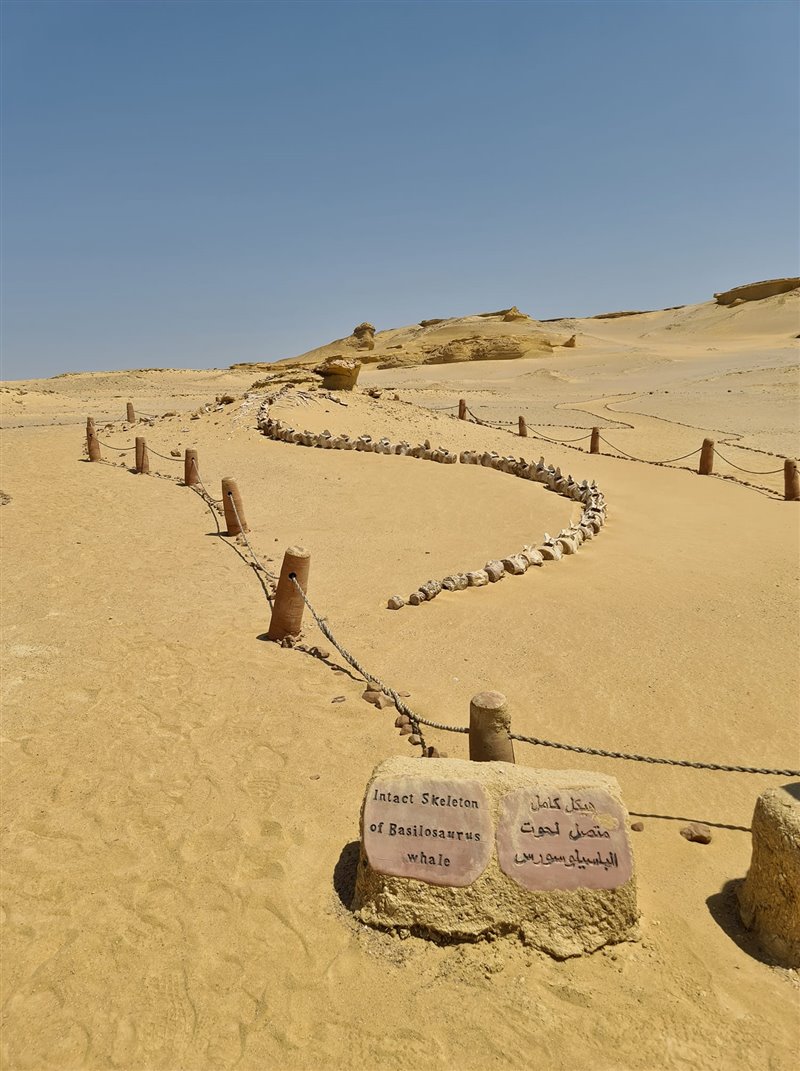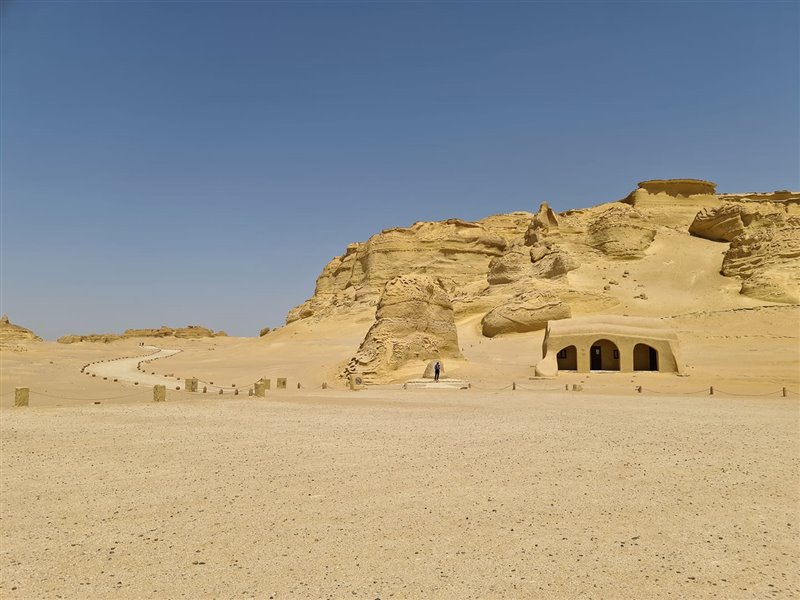They call it “the Valley of the Whales”. Its great abundance of prehistoric cetacean skeletons explains the name. They are approximately 56 to 34 million years old. The treasure trove of whale fossils in Egypt. And one of the most numerous in the world.

Cursed place
They were discovered in the early 20th century. But for many decades the fossils remained abandoned. It’s a remote place that was difficult and dangerous to go to. There was something else: it was considered a cursed place.
The west of the Nile was, from the time of the pharaohs, a place associated with death. Egyptian necropolises were always located on the west bank of the great river. There began the desert, domain of Set, the god of chaos and conflict. There dwelt the jackals, the incarnation of Anubis, the guide of the dead in the Beyond. No one came near it. Except perhaps the caravan drivers and the Bedouins.
The Bedouins discovered the first fossils. They appeared on the surface of the desert naturally by the action of the wind. But, far from advertising it, it gave them a reason to stay away from there. Those enormous bones could only belong, according to them, to the djinn or genies. Supernatural beings from folk tales such as The Thousand and One Nights.
In the 1980s, the site began to arouse interest among paleontologists. Soon, the treasure trove of whale fossils in Egypt was revealed in its vastness. An environment that had remained untouched by humans. And an optimal terrain for the preservation of the bones, easy to excavate.

World Heritage Site
Most of the fossils are of archaeocetes, an extinct group whose name means “archaic cetaceans”. They are the link of these mammals between terrestrial and aquatic life. The most common are those of Basilosaurus y Dorudonmarine carnivorous cetaceans. Fossils from other geological epochs have also been found. For example, land and marine mammals, sea turtles, fish and reptiles.
It received World Heritage Site status in 2005. It became a modest ecotourism destination, with a few thousand visitors a year. Some of the fossils have been left outdoors as part of an open-air museum. The trail runs through a small part of the site, which totals about 200 km².

